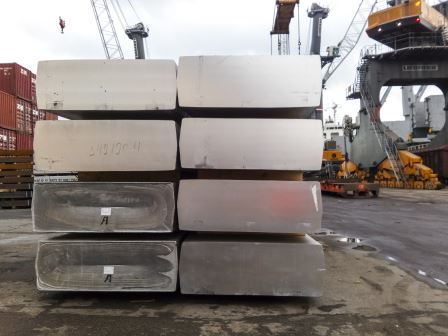
Oil has been on a recovery mode since it tumbled to a low of $27.10 a barrel in mid-January 2016. Expectations of upbeat global demand and concerns over supply lifted oil prices and now it is trading firm, with the ICE Brent futures trading inside $70-$80 a barrel since April. The commodity stayed largely insulated and continued edging higher even after worries about the trade stand-off between U.S. and China gripped the market. In domestic market, it is hovering near its four year highs on gains in the overseas market along with weak domestic currency.
OPEC and other top oil producers including Russia have been limiting daily crude production by 1.8 million barrels since last year with a view to rein in global oil glut and lift prices, leading to supply shortage. Increased instability in few Middle East oil producing countries, like Iran, and Venezuela also had considerable impact on the global oil market, especially the Asian Brent. Worries over supply flared up after the U.S, in May, unilaterally withdrew from the 2015 international nuclear deal and re-imposed sanctions on Iran, which is the third largest producer in OPEC.
The U.S is now pressurizing Iranian crude buyers to stop all energy dealings with the county by November 4. Many countries have already halted buying oil from Iran. Reportedly, India too has reduced imports from Iran with the August import data showing a drastic decline of 32 percent compared to a month earlier. India is the second top buyer of Iranian oil followed by China.
The Venezuelan crisis too hit the oil market. There has been a sharp decline in crude oil production from the country in the wake of the nation’s economic crisis. Among the OPEC countries, Venezuela has the largest oil reserves. Oil output from the country has halved in the last two years due to political and economic tensions.
Expectations of robust demand too buoyed oil prices. OPEC forecasts global oil demand will hit 100 million barrels per day much sooner than its earlier projection. It is also expected that the producer group is most likely to keep prices steady between $70-80 a barrels.
In the meantime, supply concerns from OPEC was mostly balanced by higher U.S production. U.S oil output is at a near record highs for last several months due to increased shale production. Output from the OPEC’s second top producer Iraq is also at record levels, which is supplementing to narrow the supply shortage. Reports say OPEC and its allies have now agreed to raise the output after U.S decided to impose sanctions on Iran in order to reduce the country’s oil revenue to zero.
A strong dollar also impacted the sentiments in oil market. Commodity prices are under stress when the dollar strengthens against other currencies. U.S dollar has been on the upside trajectory since the country starts imposing tariffs on imports.
In the domestic market, oil prices were hit hard due to a weak INR. A weak currency would lift the landed cost of the commodity imported into the country. Since India meets most of its oil demand through imports, prices prevailing in the domestic market are much higher against that prevailing in the international market. Domestically traded oil jumped more than 30 percent since the start of the year, while the international prices gained only 15 percent during the period.
Indian rupee has weakened about 12 percent against the U.S dollar since the beginning of this year. It was a vertical fall from Rs. 63.28 a dollar, its strongest point about two-and-half years, to its all-time low of Rs. 72.09 against dollar. A strong dollar coupled with collapse in emerging market currencies affected the sentiments. Since the start of the year, many of the emerging market currencies have dropped tremendously. The Turkish Lira tumbled more than 78%, while Brazilian Real shed 30% and South African Rand declined by 19% so far this year.
High import bill on crude oil is one of the influential reasons for the recent drop in Indian currency. As per data, our oil import bills mounted more than fifty percent in the first four months of this financial year against the same period last year, causing widening current account deficit.
Looking ahead, as long as the looming geopolitical tensions continue, prevailing positive moves are less likely to continue. Chances of more oil from OPEC and its allies, feeble demand from China and other emerging countries likely to weigh oil’s upside potential, though sanctions on Iran is expected to threaten the global supply.
Intensifying trade tensions between two top world economies, the US and China, with the former planning to impose a fresh round of tariffs on imports from China and resultant retaliation could have considerable repercussions on the global economic growth. This may eventually affect the oil market later. The ICE Brent futures are most likely stay inside the trading range of $80-$70 a barrel but breaking any of the sides would suggest fresh direction. In domestic market, a sudden recovery in INR would tend to make prices weak, else may continue its upside momentum.
Posted: September 2018








